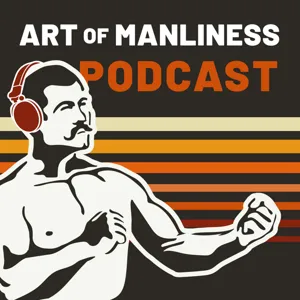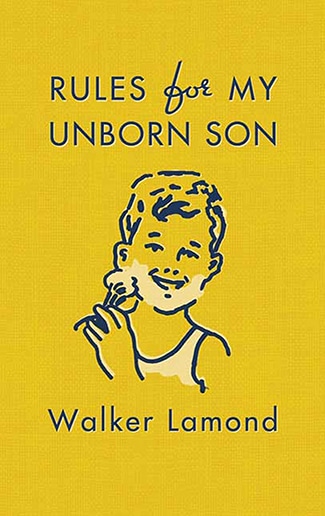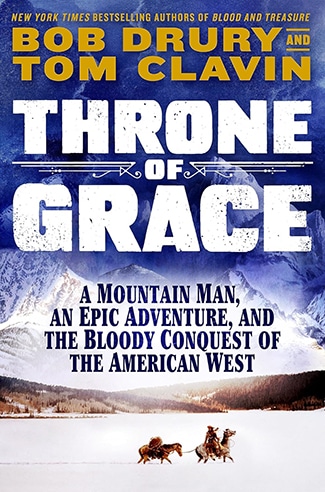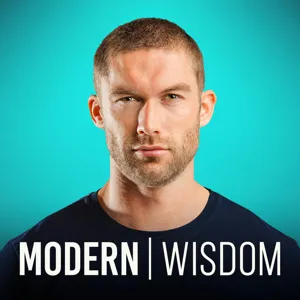Podcast Summary
Focus on benefits over features for effective communication: To craft simple, influential messages, prioritize benefits, ask '5 Whys' to identify them, replace 'and' with 'so', and visualize your message as a Jenga tower for minimalism.
As communicators, we have a natural tendency to complicate messages, but as receivers, we prefer simplicity. This "rift" between sender and receiver, coupled with societal and individual pressures to add more information, makes it challenging for effective communication. Marketer Ben Gutman emphasizes the importance of fluency – the ease with which a message is perceived, understood, and acted upon. To craft simple, influential messages, focus on benefits over features, ask the "5 Whys" to identify benefits, replace "and" with "so" for clearer messaging, and imagine your message as a Jenga tower to ensure minimalism. Remember, minimal doesn't always mean short; it means clear and easily understood.
Crafting simple messages for a distracted world: Effective communication requires filtering out distractions and focusing on clear, concise messages to resonate and get results in today's media-saturated society.
In today's world, where people are constantly bombarded with information and distractions, crafting simple and effective messages is more important than ever. With the average American consuming 13 hours of media a day, our ability to filter out unimportant information and focus on what matters is crucial. This isn't just relevant for marketers and salespeople, but for anyone trying to communicate and influence others, whether it's in a professional or personal setting. The ability to convey messages in a clear and concise way can make the difference between being heard and being overlooked. This is the essence of the book discussed, which aims to provide practical advice on crafting simple messages that resonate and get results, regardless of the context.
Three Sins of Complication: Selfishness, Cowardice, and Lack of Clarity: Effective communication requires prioritizing the receiver's needs, being truthful, and striving for clarity to resonate with the audience and avoid the three sins of complication: selfishness, cowardice, and lack of clarity.
Effective communication requires understanding that people don't naturally care about the messages we want to send them. Marketers, managers, and parents all face the challenge of making their messages relevant and valuable to their audiences. Complication is an easy trap to fall into, as it allows us to hide our true intentions and prioritize our own needs over those of the receiver. The three sins of complication are selfishness, cowardice, and lack of clarity. Selfish communication prioritizes our own needs over those of the receiver. Cowardly communication hides the truth or avoids difficult conversations. Lack of clarity makes our messages confusing and hard to understand. To communicate effectively, we must take responsibility for the cost of our communication, craft messages that resonate with our audience, and strive for simplicity and clarity.
Airports and Complexity: Strive for clear and concise communication to ensure effective understanding and engagement. Complexity can lead to misunderstandings, accidents, and cost businesses billions.
We often use complexity in our communication to mask our fears about status or abilities. This was illustrated in a study on how small and large airports refer to themselves, with the smaller airports using the term "international" more frequently to convey a sense of higher status. However, complexity can also be detrimental, leading to misunderstandings, accidents, and even costing businesses billions of dollars. A simple message, like a dentist telling a patient to only floss the teeth they want to keep, can be more effective and memorable. Conversely, complicated messages, such as lengthy parking signs, can confuse and frustrate. It's important to strive for clear and concise communication to ensure effective understanding and engagement.
Focus on benefits, not features: Identify functional, emotional, and driving motivations to effectively communicate benefits, not just features.
Effective communication is about being kind and highlighting the benefits of what you're trying to sell or persuade. Instead of focusing on features, it's important to understand and communicate the outcomes or results that the person will receive. For example, people don't want a quarter-inch drill, they want a quarter-inch hole. By focusing on the benefits, you can resonate with how people make decisions and ultimately be more successful in your communication. The first step in identifying benefits is to ask "so what?" repeatedly, starting with the feature and working your way to the functional, emotional, and driving motivations. Clear and kind communication, such as "don't even think of parking here," may not be nice, but it is respectful of the desired outcome.
Understanding emotional needs behind features: To create effective sales and marketing messaging, focus on emotional benefits instead of just features. Keep asking 'so what?' to reach the primal need or problem being solved.
Understanding the emotional needs behind the features of a product or service is key to creating effective sales and marketing messaging. Using the example of toothpaste, while mint flavor is a feature, the real reason people buy it is for the emotional benefit of having fresh breath, which can lead to a more successful date. As organizations grow older, they may lose touch with these needs and focus too much on features, leading to less effective messaging. To create focused messages, it's important to keep asking "so what?" until you reach the basic primal need or problem being solved. Microsoft Excel is an example of a product that started out with clear messaging about its benefits but later lost focus and assumed customers already knew what it did. By staying in touch with customers and understanding their needs, companies like Warby Parker are able to create more effective, focused messaging.
Focus on one thing at a time for clear communication: Replace 'and' with 'so' for clearer messages, avoid unnecessary additions, and focus on one thing at a time for effective communication.
Our ability to focus and effectively communicate messages is limited. The persistent myth of multitasking and handling multiple things at once has been debunked by research. Instead, we can only truly pay attention to one thing at a time. This concept is demonstrated by the "Frankenstein idea," where combining multiple messages can result in a confusing and less effective communication. A simple trick to refine messages and make them more focused is to replace "and" with "so" in sentences. This forces us to consider the logical connection between ideas and helps ensure that our messages are clear and sequential. Additionally, it's important to avoid adding unnecessary elements to our messages, as every addition takes away from the attention given to other elements. A practical example of this is a company developing a loyalty program for a cafe. Instead of releasing a line of collectible mugs "and" building a mobile app, they should focus on building the mobile app "so" customers can track their points. By keeping messages focused and clear, we can effectively communicate our intended ideas and avoid creating confusing "Frankenstein" messages.
Focus and salience in marketing messages: Effective marketing messages require focus to convey a clear message and salience to grab our attention. Walmart's 'Save money, live better' slogan and 'The Subtle Art of Not Giving an F' book are examples of successful focused and salient messages.
Focus and salience are crucial elements in crafting effective marketing messages. Our attention is a finite resource, and trying to convey multiple messages at once dilutes the impact of each one. Walmart's "Save money, live better" slogan is an excellent example of a focused message that resonates with consumers. Salience, on the other hand, refers to the ability of a message to grab our attention. We only notice things that stand out, and in a world bombarded with thousands of messages daily, it's essential to differentiate ourselves. The book "The Subtle Art of Not Giving an F" is an illustrative example of a salient message that stood out in a crowded market by breaking the norm and using unconventional language. To make your message more salient, consider imposing constraints that push you to think creatively and differentiate yourself from the competition.
Creating effective messages involves understanding audience needs and experimenting with formats: Experiment with different formats and empathize with audience motivations to create salient messages.
Creating effective and salient messages requires stepping out of your creative comfort zone and considering the unique needs and perspectives of your audience. This means experimenting with different formats, lengths, and tools to capture attention, as well as empathizing with your audience's motivations, emotions, and language. Examples of salient messages include those that contrast with the norm, such as the "don't park here" sign or the shocking anti-smoking ads from the Truth campaign. To ensure your message resonates, test it on members of your target audience and adjust accordingly. Remember, the goal is to create a message that stands out and speaks directly to your audience's interests and needs.
Effective communication requires empathy, salience, focus, and minimal friction: Empathize with audience, make message relevant, keep it clear and concise, and minimize friction for effective communication
Effective communication requires empathy, salience, focus, and minimal friction. Empathy involves understanding the audience's perspective and speaking in their language. Salience means making the message relevant and important to the audience. Focus means keeping the message clear and concise. Minimal friction means making it easy for the audience to understand the message. However, minimal does not always mean short. It's essential to strike a balance between conveying enough information and keeping it simple. A tactic to achieve minimal messaging is to "play Jenga" with your message, carefully removing words and sentences while ensuring the message still stands. Remember, the goal is to ensure the audience receives the intended message with the least amount of friction.
Start with a minimal message and imagine a single person as your audience: Effective communication involves simplifying messages, using common words, and repetition to ensure clarity and accessibility to a single person.
Effective communication involves starting with a minimal message and imagining a single person as your audience. This approach, inspired by the concept of a minimum viable message and the use of common words, helps ensure clarity and accessibility. These principles, along with repetition, act as design principles to guide the development of an effective message. Repetition plays a crucial role in reinforcing the message and aiding the receiver in understanding and remembering it. It's essential to remember that these principles are not a rigid checklist but rather guidelines to enhance communication.
The power of repetition in communication: Repetition in communication increases liking and trust, but balance is key. Regularly share messages with your audience to ensure they're received and resonate.
Effective communication requires repetition. The mere exposure effect shows that people tend to like and trust messages more when they're exposed to them repeatedly. However, it's essential to find the right balance as excessive repetition can lead to annoyance. For businesses, sending regular email newsletters or announcing new policies multiple times can help ensure that messages reach and resonate with their audience. When crafting a message, it's crucial to test it with representatives of your target audience to gauge its impact. Ben Gutman, author of "Simply Put," emphasizes the importance of repetition in communication and encourages businesses and individuals to be persistent in sharing their messages. To learn more about Ben's work, visit his website, BendGutman.com, or sign up for his free weekly email.
Review and Share the Art of Manliness: Sign up for the newsletter, leave a review, and apply the knowledge to make a difference in your life
You can do this by visiting the website at artofmanlies.com, signing up for the free newsletter, and leaving a review on your preferred podcast platform. By doing so, you'll be the first to know about new content and can share the show with others who might benefit from it. But most importantly, it's essential to apply what you've learned from the podcast to your daily life. Remember, listening is only the first step; putting the knowledge into action is what truly makes a difference. So, thank you for tuning in, and until next time, keep learning and living the Art of Manliness way.














